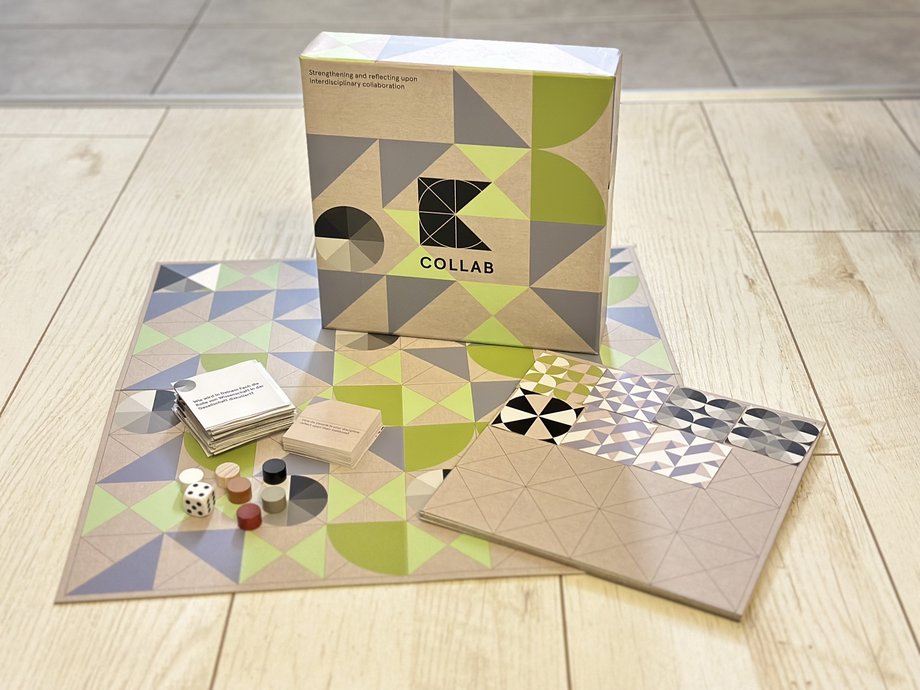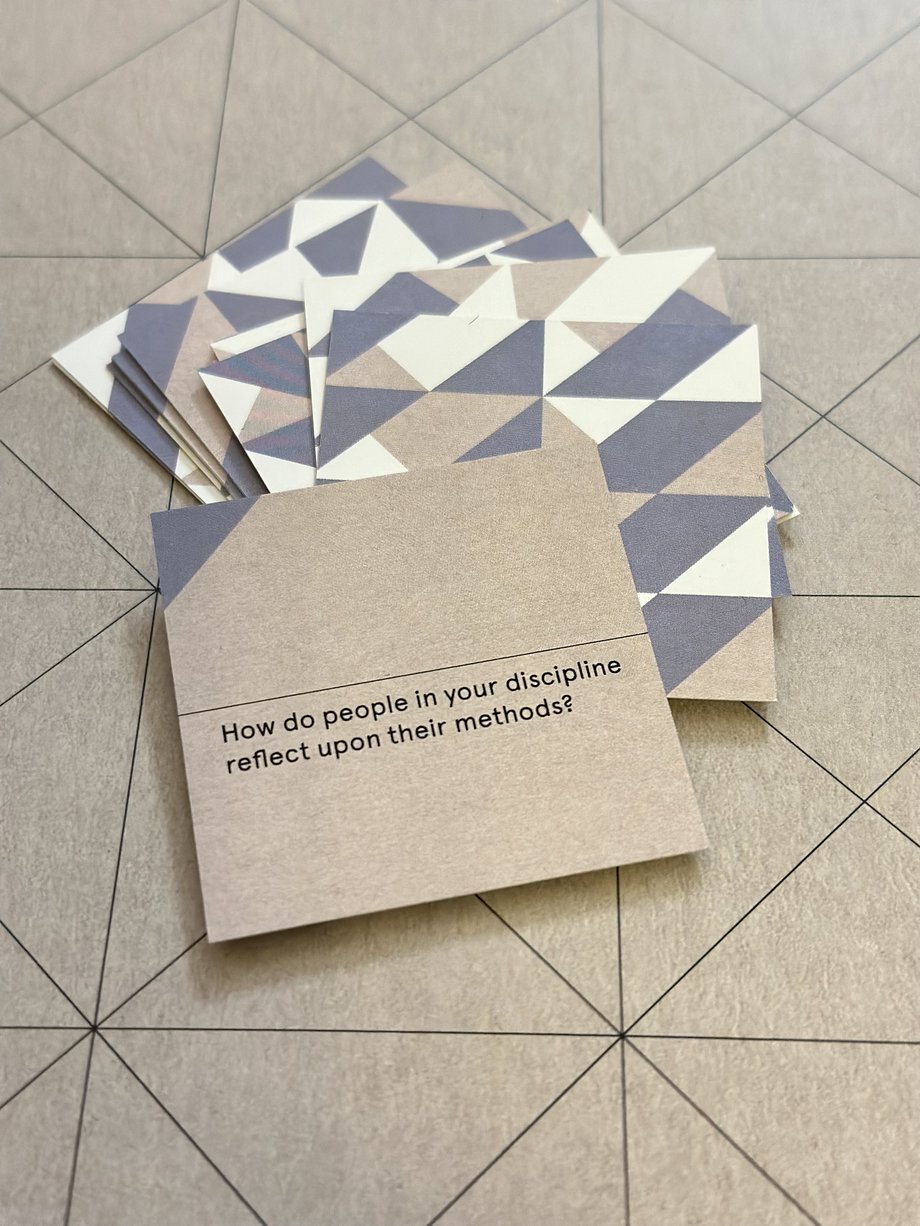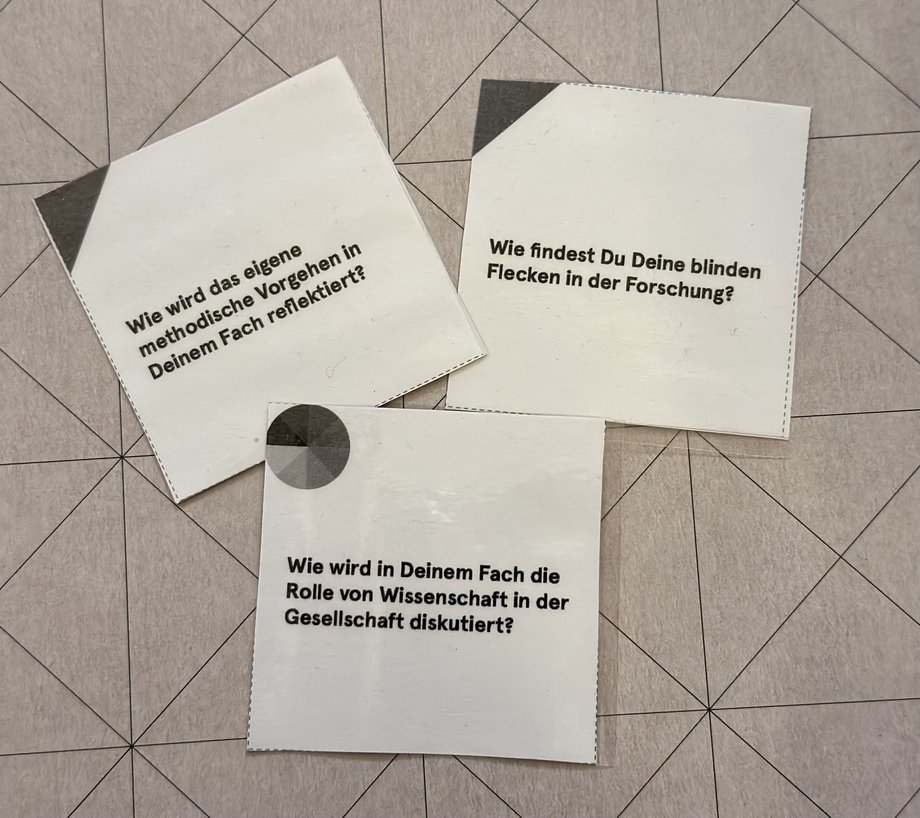COLLAB
Developed to promote interdisciplinary collaboration, the innovative, cooperative board game "Collab" enables a playful exchange across disciplinary boundaries. It invites you to immerse yourself in the world of interdisciplinary teamwork, explore challenges and improve communication and cooperation.
Whether complex topics such as climate change or gender equality - "Collab" funds a change of perspective and shows that diverse perspectives are crucial to overcoming challenges. The game strengthens interdisciplinarity and creates a space in which working and project groups can operate free from discrimination. Collab is particularly suitable for interdisciplinary research teams that are at the beginning of their collaboration. It enables them to familiarise themselves with the different disciplines and their approaches to science - a basis for effective collaboration and for avoiding misunderstandings later on.
As a method for activating dialogue, "Collab" offers an entertaining approach to facilitate the exchange between the different disciplines. Visually, the game is modelled on the Bauhaus aesthetic, a design school that traditionally works in an interdisciplinary way and therefore perfectly reflects the concept of "Collab".
"Collab" is available in our laboratory in both German and English. We would like to express our special thanks to the University of Kiel, which provided our lab with a free copy of the game.
Number of participants
Minimum: 4; Maximum: 6
Duration
90 to 120 minutes
Venue
Seminar room with free table
Set-up and procedure
The players move figures around the board and take turns drawing reflection, discussion and event cards. Reflection cards contain questions such as:
- What does your scientific activity mean to you personally?
- How do you discover blind spots in your research?
- If you could change something in your discipline, what would it be?
The players express their professional or personal opinion in a maximum of one minute, while the other participants note down important or surprising points and questions. Discussion cards are used to debate one of the five big questions for ten minutes, for example:
- How is the role of science in society discussed in your subject?
- What categories do you work with?
- How is your professional world categorised?
Event cards change the position of the figures on the game board.
The patterns on the back of the cards use the shapes shown on the board. Triangular patterns can be seen on the back of the reflection cards, and patterns of quarter circles on the event cards. During the game, a visual representation of the process is created that reminds the players of the exchange. This visual representation varies after each round of the game, symbolising the diversity of interdisciplinary research.



